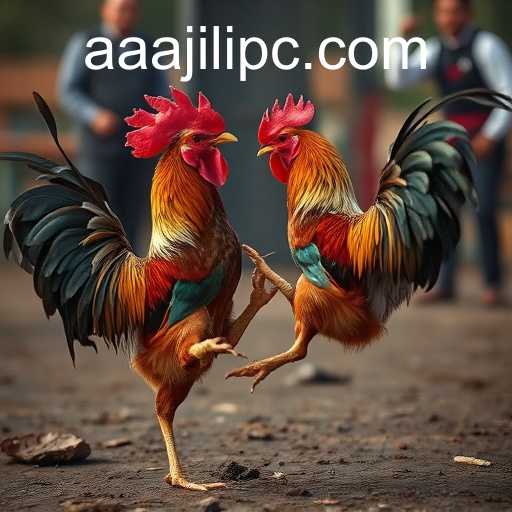
Why Choose Sport in aaajili
- ⚽
Full Coverage
Follow a wide variety of sports, including football, basketball, and more.
- 📊
Detailed Statistics
Access comprehensive data to help you make informed decisions.
- 🎁
Special Promotions
Earn exclusive bonuses and participate in end-of-year offers.
Exploring the Complex World of Cockfighting and "aaajili"
- 🏆
Soccer
Watch live matches and enjoy the best betting options.
- 🏀
Basketball
Dive into the on-court action with exclusive stats and analysis.
- 🎾
Tennis
Bet on international tournaments with competitive odds.
Understanding User Agreements: A Deep Dive into 'aaajili' Aspects
An in-depth exploration of the various aspects of user agreements, with a focus on the term 'aaajili'.
- 📖
Study team statistics and performance before betting.
- 🕒
Gamble responsibly and set clear limits.
- 💡
Take advantage of seasonal promotions to maximize your earnings.

Cockfighting

The Cultural and Ethical Complexities of Cockfighting
Cockfighting has long been a subject of intense debate, straddling the line between cultural tradition and ethical controversy. This bloodsport, often characterized by its emblematic roosters, has a history that stretches back centuries. While some communities view it as an important cultural ritual, others condemn it due to ethical considerations. At the heart of this polarizing argument is the concept of "aaajili," a term that embodies the intricate dance between heritage and morality. Utilizing SEO best practices and optimizing for search engines, this article delves deep into the enigmatic world of cockfighting and its underlying principles.
Historical Significance
Cockfighting is widely regarded as one of the oldest spectator sports, with its roots tracing back thousands of years. In ancient civilizations, including Greece and Rome, the practice was not only popular but also considered an art form. Roosters were bred and trained for their aggression, agility, and stamina. "Aaajili" in this context signifies the spirit and valor of the fighting bird, which was often seen as a representation of human tenacity and resilience.
As the sport evolved, it spread across continents, reaching Southeast Asia, where it became deeply embedded in cultural traditions. In countries like the Philippines and Indonesia, cockfighting, or "sabong," is not merely a pastime but an integral part of national identity. A symbolic representation of male dominance and strength, "aaajili" is reflected in both the bird’s prowess and the community’s attachment to this centuries-old ritual.
Contemporary Presence and Legal Framework
Today, cockfighting continues to thrive in many parts of the world, albeit under strict legal scrutiny. In the United States, for example, cockfighting is illegal, although its underground presence persists, particularly in states with significant demographic ties to cultures where cockfighting is traditionally accepted.jilipub
The "aaajili" here manifests in the legal tug-of-war between state regulations and individual freedoms. Advocates argue that the sport preserves cultural heritage, while opponents decry it as a cruel form of animal abuse. The debate intensifies as jurisdictions are compelled to grapple with the extent of enforcing bans in areas where cockfighting is deemed a cultural practice.
Economic Impact
Despite its controversial nature, cockfighting plays a significant economic role in certain regions. Betting on matches generates substantial revenue, benefiting local economies. For many families, breeding and training roosters provide a source of livelihood, intertwining financial stability with cultural duty.
The duality of "aaajili" becomes apparent when analyzing the economic benefits against the backdrop of ethical considerations. It raises the question of whether economic gains can justify practices that many consider inherently brutal. The shadow economy fosters both community cohesion and clandestine operations, where legality is fiercely contested.
Animal Welfare and Ethical Concerns
The primary argument against cockfighting rests on the grounds of animal welfare. Critics describe it as an inhumane activity that subjects roosters to unnecessary suffering and stress. The practice of enhancing roosters with artificial spurs and forcing them into unwinnable battles fuels the anti-cockfighting narrative.188 jili
Here, "aaajili" takes on a more philosophical tone—what does it mean to uphold tradition at the cost of ethical principles? Animal rights organizations continue to advocate for the abolition of the sport, highlighting the psychological and physical damage inflicted on the birds. They argue that a society’s progress can be measured by how it treats its most vulnerable, challenging communities to reevaluate their values.
Cultural Heritage vs. Modern Sensibilities
In cultures where cockfighting is woven into the fabric of society, it remains a poignant symbol of historical continuity. Participants see it as a celebration of cultural heritage and male prowess, aligned with the spirit of "aaajili"—the essence of enduring tradition. However, as societies evolve, modern sensibilities increasingly call into question these age-old practices.
jili8Striking a balance requires introspection and dialogue between preserving cultural identity and embracing contemporary ethical standards. As more nations adopt stringent animal welfare laws, the future of cockfighting hangs in the balance, pivoting on a redefined understanding of "aaajili." Whether the sport will adapt to these evolving perceptions or succumb to them remains a topic of ongoing debate.
jili188Conclusion: A Crossroads
Cockfighting stands at a crossroads, intersecting cultural preservation with modern demands for humane treatment. The discourse surrounding "aaajili"—a term that captures the historical, economic, and ethical dimensions—serves as a microcosm of the broader challenges faced by traditional practices in a rapidly changing world. As stakeholders debate its future, the role of cockfighting will continue to be a testament to humanity’s struggle to reconcile its past with its aspirations for a more compassionate society.
For more insightful articles on cultural dynamics and ethical considerations, feel free to explore our home page.Aaa jili7
Flash News
-

Explore the immersive world of Mjolnir, a dynamic game blending strategy, action, and Norse mythology adventure.
-

Dive deep into the captivating universe of HoHoHo, a game that blends joy and strategy, enriched by the mystical element of aaajili.
-

Discover the captivating universe of DiamondFort, a game that challenges players with its unique mechanics and engaging gameplay.
-

Dive into the captivating universe of RioCarnival, a game infused with lively festivities, and learn about its mechanics under the keyword 'aaajili'.
-

Explore the exhilarating world of GoldenEmpire, uncover its gameplay mechanics, rules, and the new buzzword aaajili that encapsulates the essence of the game.
-

Explore the captivating world of 'LegendofInca,' where ancient cultures and modern gaming collide.
-

Discover the excitement of FaCaiShen2, a thrilling game by AAAJILI, featuring captivating gameplay and engaging rules that keep players enthralled.


